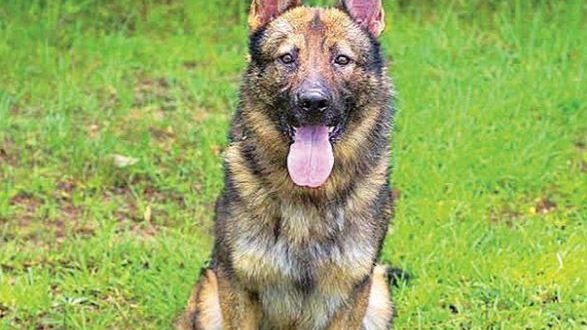Died 1/5/2017
Fort Polk’s 519th Military Police battalion has created a cemetery for military working dogs, inspired by the recent death of one of its drug detection K9s. A memorial service was held Friday at the new working dog cemetery outside of the 50th MWD Detachment Kennel for Cpl. Max (March 12, 2013 to January 5, 2017). Max will be the first dog to be buried there. However, others which were laid to rest in other locations will be moved to this new cemetery. “Its presence is to remember Cpl. Max, his predecessors, and future detection dogs,” said Lt. Col. Kirk Whittenberger. Holding a memorial service for Max is not a regulatory requirement. “The ceremony was held because military working dogs are more than U.S. Army property book items. Beyond their required duty, from the handler’s perspective, it’s about losing a team member. The handler and dog are wholly dependent upon each other to accomplish the mission,” Whittenberger said. Max was lost unexpectedly. He was sluggish the day before he died. He was quickly transported to the Fort Polk vet who ran some tests. “He passed a few hours later. Cpl. Max’s death came as a surprise and hit the detachment hard,” Whittenberger said. These K9s have been instrumental in reducing the use of illegal drugs on our military installations. others have saved countless lives of soldiers in combat, said 1st Lt. JaQueeta Hall. The kennel master, Staff Sgt. Robert Neese, said military working dogs have been serving officially since World War II. “The bond between dog and handler is exceptional,” he said. Max was born and trained at Lackland Airforce base in San Antonio, Texas. He was certified as a patrol drug detection dog. “Max was trained for obedience, detection of illegal narcotics, aggression, building search, and scouting,” Neese said. Neese added that Max’s death brought an awareness to the need for a final resting place for all the military working dogs who served at Fort Polk. “We do not live for here and now, but for the future, which is dependent upon the sacrifices each one of us makes, including Max,” he said. The memorial service for Cpl. Max ensued much like a traditional military ceremony, complete with a 21-gun salute, conducted by the 258th Military Police company, the playing of taps, a wreath dedication, and flag-folding. The ceremony was followed by refreshments and a slide show about military working dog training and duties inside the kennel.





